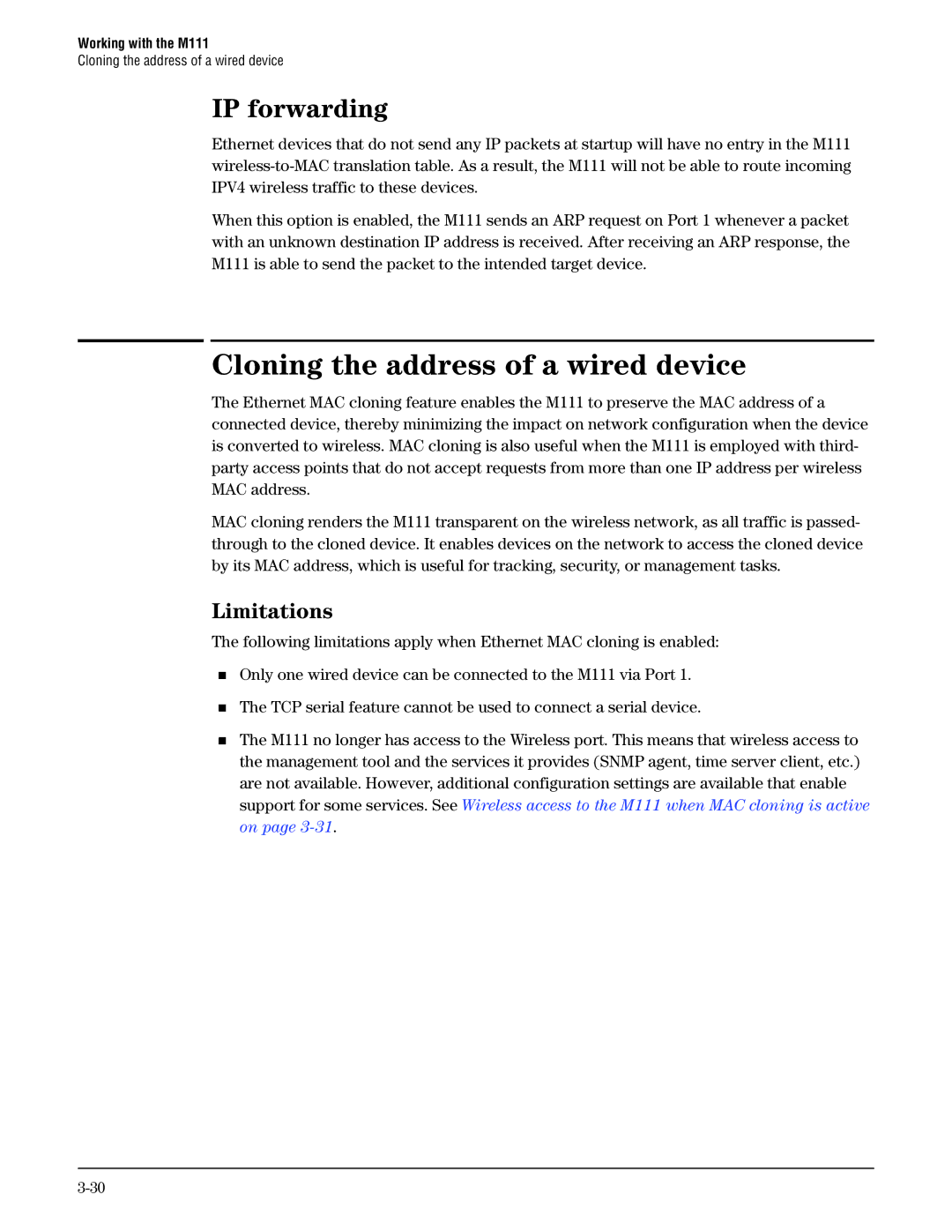
Working with the M111
Cloning the address of a wired device
IP forwarding
Ethernet devices that do not send any IP packets at startup will have no entry in the M111
When this option is enabled, the M111 sends an ARP request on Port 1 whenever a packet with an unknown destination IP address is received. After receiving an ARP response, the M111 is able to send the packet to the intended target device.
Cloning the address of a wired device
The Ethernet MAC cloning feature enables the M111 to preserve the MAC address of a connected device, thereby minimizing the impact on network configuration when the device is converted to wireless. MAC cloning is also useful when the M111 is employed with third- party access points that do not accept requests from more than one IP address per wireless MAC address.
MAC cloning renders the M111 transparent on the wireless network, as all traffic is passed- through to the cloned device. It enables devices on the network to access the cloned device by its MAC address, which is useful for tracking, security, or management tasks.
Limitations
The following limitations apply when Ethernet MAC cloning is enabled:
Only one wired device can be connected to the M111 via Port 1.
The TCP serial feature cannot be used to connect a serial device.
The M111 no longer has access to the Wireless port. This means that wireless access to the management tool and the services it provides (SNMP agent, time server client, etc.) are not available. However, additional configuration settings are available that enable support for some services. See Wireless access to the M111 when MAC cloning is active on page
